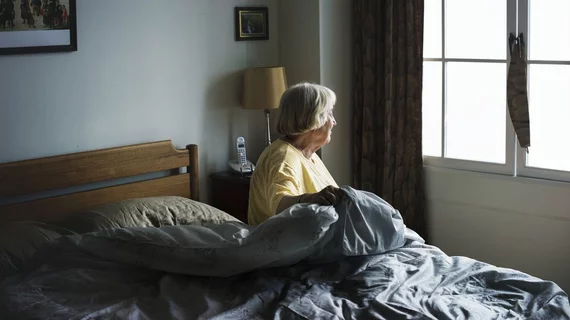No place like home: Acute care delivered at home safe, effective
Home-based acute hospital care is not only safe but also associated with significantly lower mortality rates, reduced utilization of skilled nursing facilities and decreased need for further hospitalization, according to researchers at Mass General Brigham.
The findings provide compelling evidence for Congress as it considers extending coverage for such care at home beyond the Acute Hospital Care at Home (AHCaH) Waiver, which is set to expire in December.
The AHCaH Waiver, introduced by the Centers for Medicare and Medicaid Services (CMS) in 2020, has allowed thousands of patients from 300 hospitals across 37 states to receive hospital-level care in the comfort of their homes. However, the national outcomes of this approach have remained largely unexamined until now.
The research letter, published in the Annals of Internal Medicine [1], examined data from 5,858 patients treated under the AHCaH Waiver between July 1, 2022, and June 30, 2023. The authors, led by David Michael Levine, MD, MPH, found that home hospital care resulted in a mere 0.5% mortality rate and a 6.2% escalation rate, where patients needed to return to the hospital for at least 24 hours. Furthermore, within 30 days of discharge, only 2.6% of patients required skilled nursing facilities, while 3.2% passed away, and 15.6% were readmitted.
"Home hospital care appears quite safe and of high quality,” Levine said in a statement. “Patients experience longer life expectancy, fewer readmissions, and fewer adverse events. If given the opportunity, many would choose this option for their loved ones."
The patient cohort in the study had a range of complex medical conditions, including heart failure (42.5%), chronic obstructive pulmonary disease (43.3%), cancer (22.1%), and dementia (16.1%). The most common discharge diagnoses included heart failure, respiratory infections (including COVID-19), sepsis, kidney/urinary tract infections, and cellulitis.
Levine said advantages of home-based hospital care are multifaceted. Patients benefit from smoother discharge processes, receive direct education on self-care in their homes and are more likely to be active.
“In addition, the clinical team has a greater ability to educate and act on the social determinants of health that we see in the home,” said Levine. “For example, we can discuss a patient’s diet right in the kitchen or link a patient with resources when we see the cupboards are bare.”
Notably, the study's outcomes remained consistent across all demographic groups, suggesting that home hospital care can reach a diverse range of patients and families, potentially mitigating healthcare disparities.
While the study provides valuable insights, it is based on observational data, and further research is needed to compare outcomes to traditional brick-and-mortar hospitals, the authors acknowledge. Levine's team is also exploring the feasibility of home hospital care for rural patients, an area not extensively covered in the current study.

